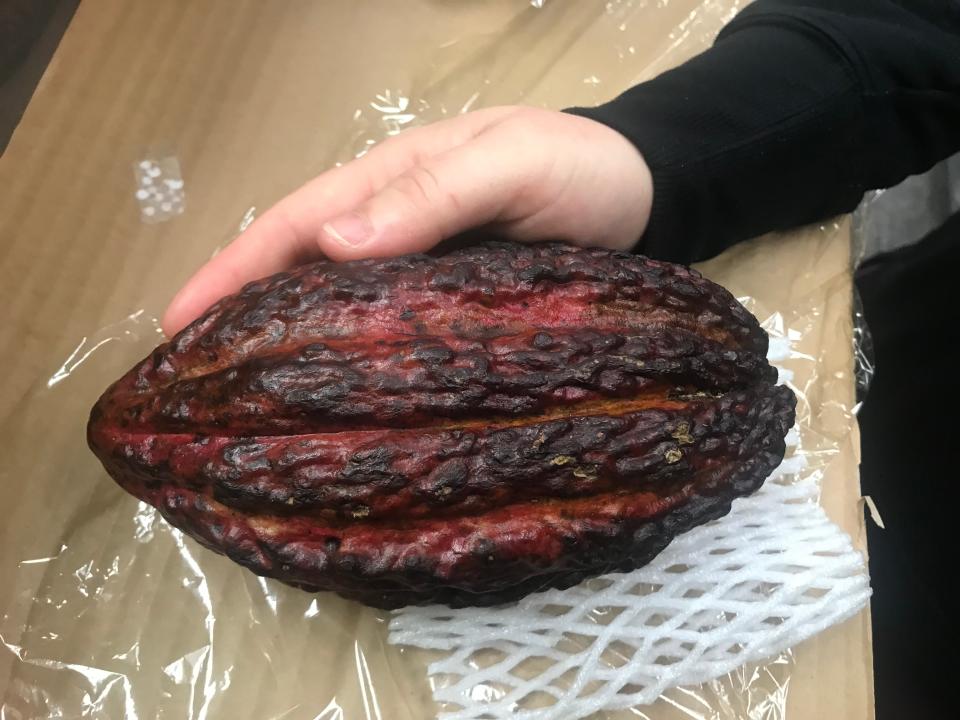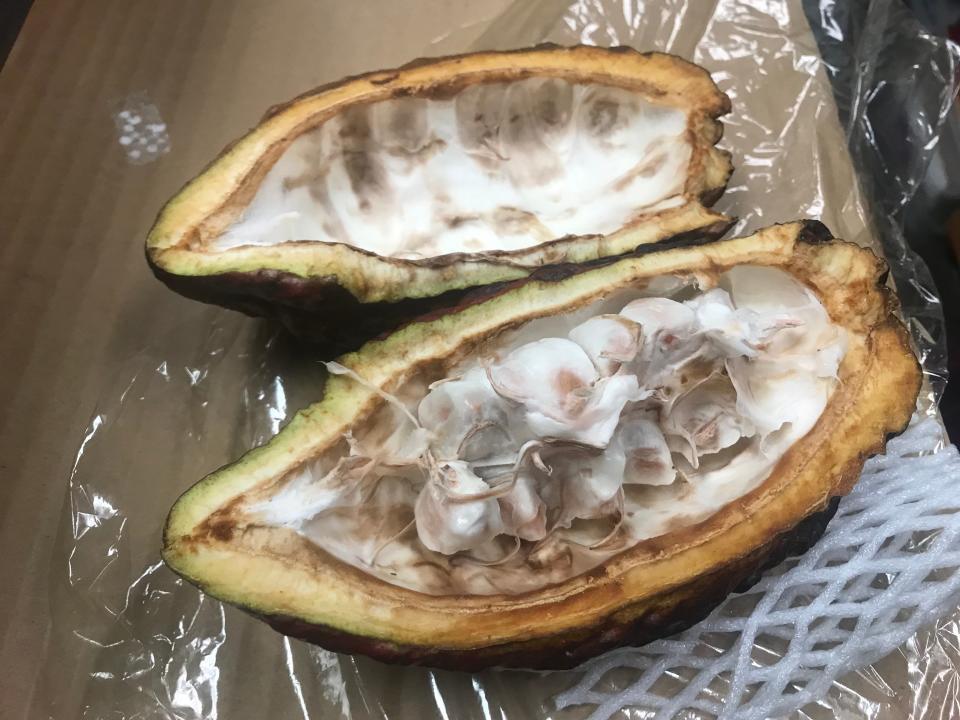The bitter beans from this tropical tree make something delicious | Mystery Plant
A few days ago I was up at the herbarium here at University of South Carolina; they let me come in now and then and putter around, helping to prepare and file away specimens.
That day we all gathered around for a show-and-tell session after lunch. You never know what somebody might bring in with which to amaze us, and this time it was up to one our data managers, Csilla Czako, to show us something cool. And she did. Csillla had been to the farmers’ market in Atlanta a few days before, and she managed to find something that she knew would be a big hit.
Gardening:Plant a blooming tree: What to do in the garden in January, February
Native Nurserries:Native Nurseries birdseed sale supports Tallahassee Museum
Nominations open:Here's how to nominate someone for 25 Women You Need to Know for 2023

She brought in the fruit of a very decidedly tropical tree. After admiring it for a while, we knew that the next step would be to cut it open and see what was inside.
Well, inside there were a bunch of seeds, big ones, sort of dark brown, hard and angular, each one surrounded by a thick membranous tissue, soft and white. The daring among us tried this pulp: delicious! A sort of sweet tartness. And then the seeds (or “beans”): solid and firm, but chewy and a bit mealy — and with an unmistakable bitter chocolate taste, a bit too bitter for some of us.
These are the seeds and fruit of a tree species native to portions of the western Amazon. Cacao, Theobroma cacao, is distantly related to hibiscus and okra, and is placed by botanists within the family to which they belong, the Malvaceae. The trees have an odd way of producing their flowers: they emerge directly from the main trunk, not on branches as with most other plants.
This species was introduced thousands of years ago into Central America and Mexico where it became an extremely important as a beverage source for the Mayans and Aztecs, who devised techniques for drying and fermenting the seeds, then grinding them all up and mixing with water into a frothy beverage, very bitter, with a bit of vanilla and hot pepper, which was drunk during various ceremonial rites, this a beverage not designed for commoners.

The “beans” were so valued that they were often used as a form of currency. Oh, if only our ancient friends could know how this flavor would be modified once it got to Europe!
This plant is indeed the source of our modern cocoa, and chocolate. The Spaniards visiting the New World realized that they had latched on to something big, and soon the beans were on their way east. Europeans were intrigued with it when it arrived in the 16th century, but surely found the brew much too bitter, and hardly addicting.
That all changed with varied new techniques of preparation, most of which involved the addition of considerable amounts and sugar, along with milk, as well as various other flavorings.
The coca and chocolate industry, especially including what they call “confectionary” chocolate, is thriving, and doesn’t seem to show any downward trends. Hmmm. I think I’m part of the reason. Maybe you, too?
John Nelson is the retired curator of the Herbarium at the University of South Carolina, in the Department of Biological Sciences. As a public service, the Herbarium offers free plant identifications. For more information, visit www.herbarium.org or email johnbnelson@sc.rr.com.
This article originally appeared on Tallahassee Democrat: From bitter bean to delightful treat, cacao delights as chocolate

